Budismo, meditação e cultura de paz | Lama Padma Samten



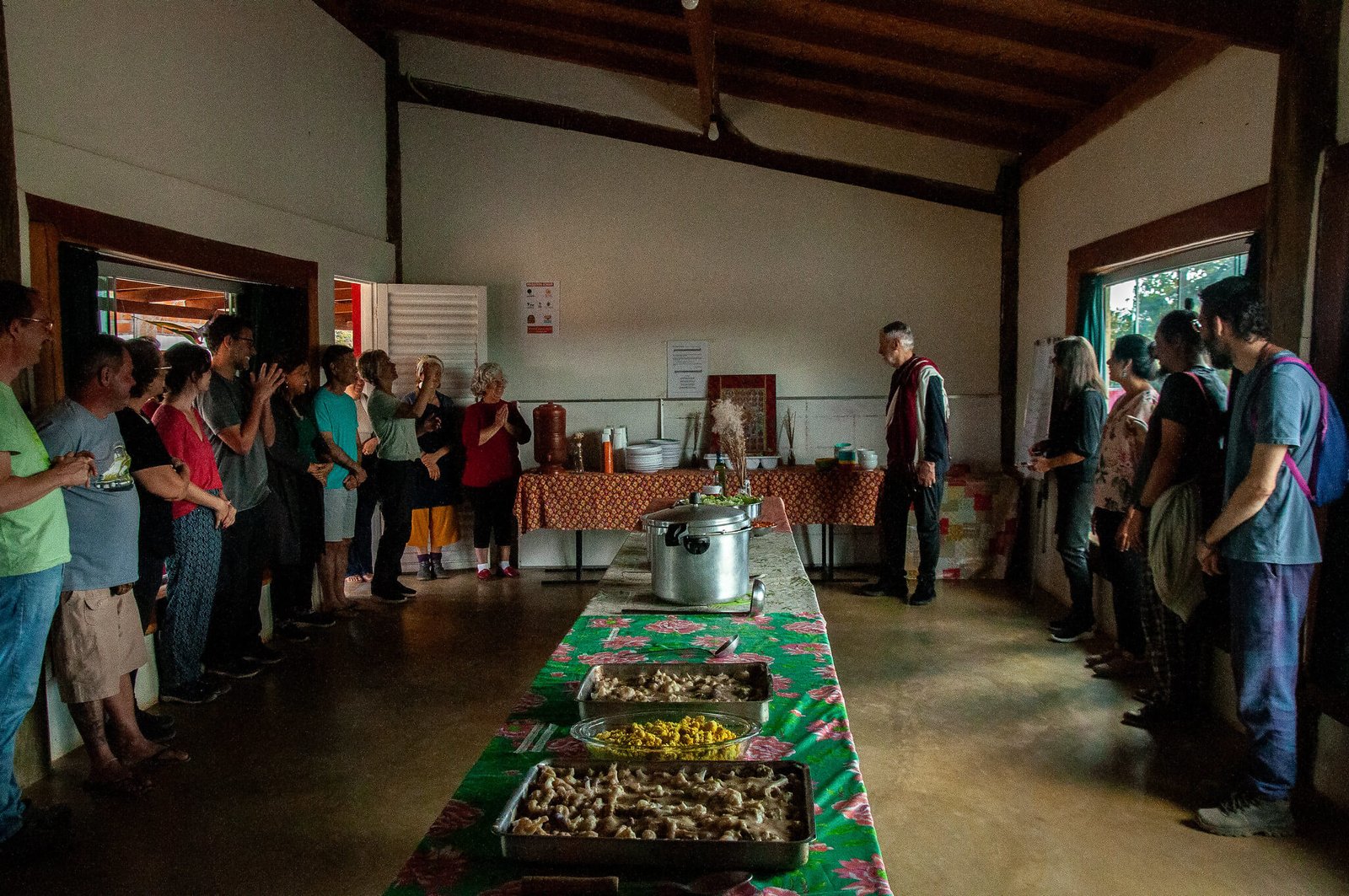

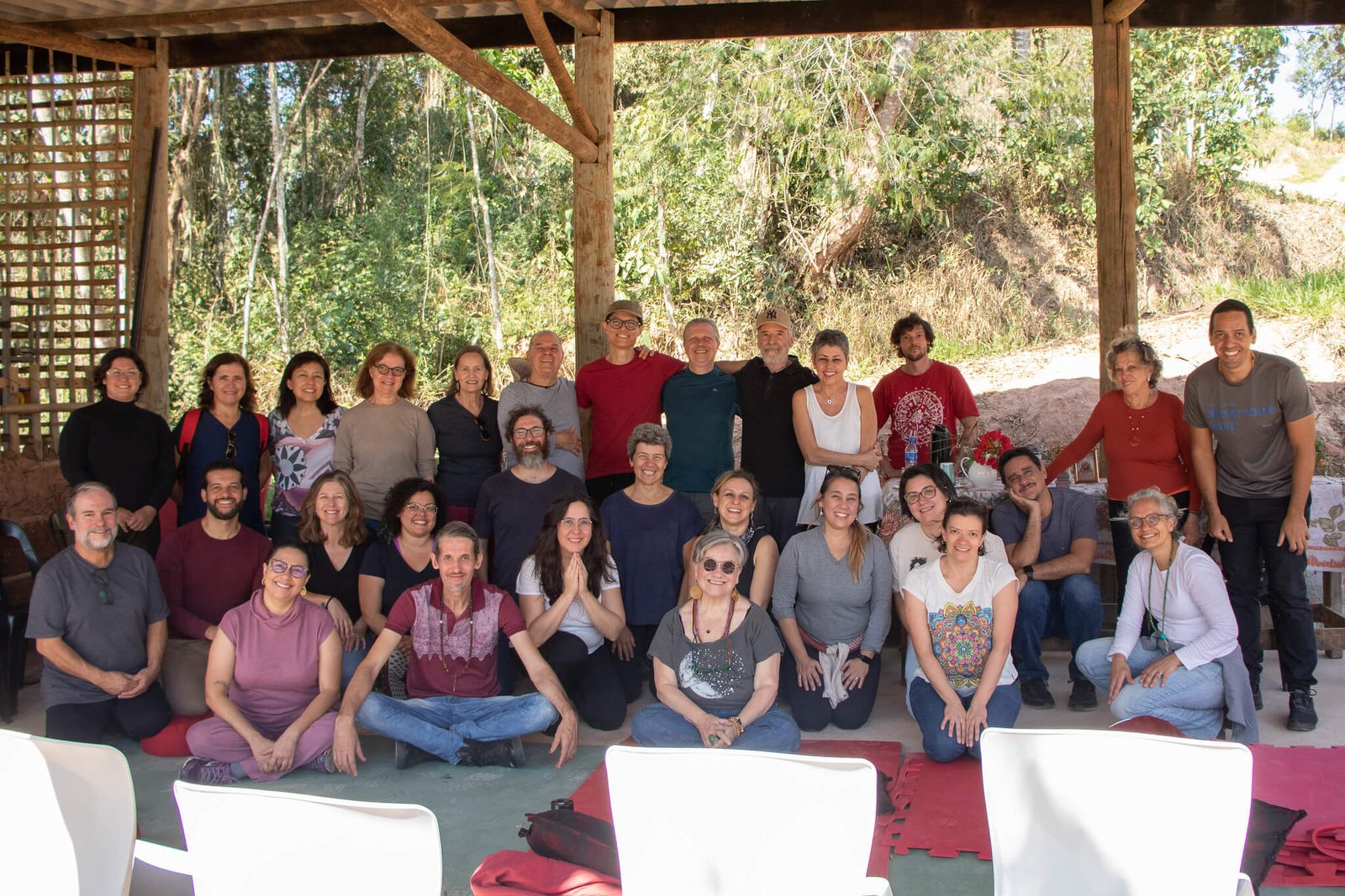


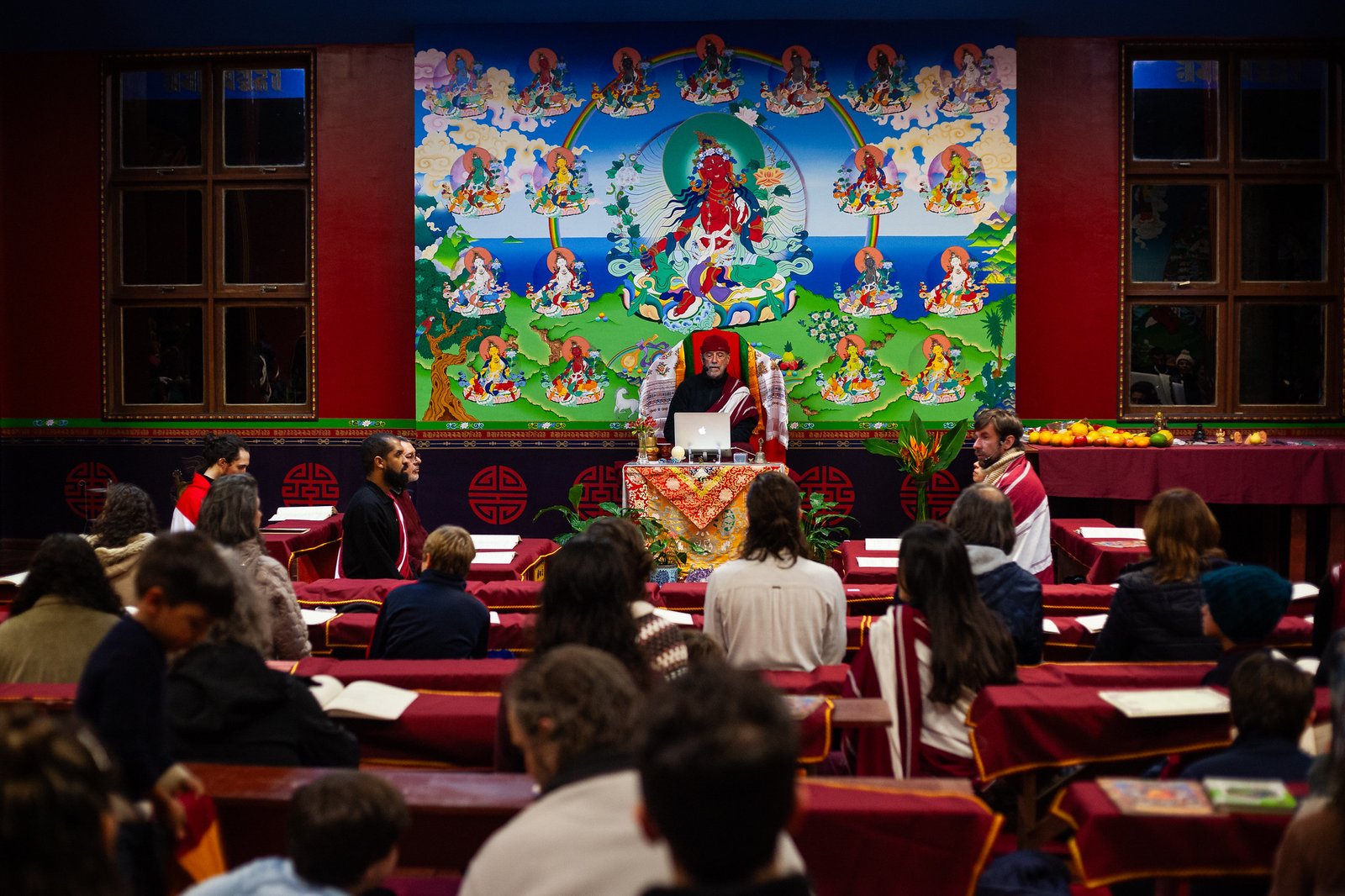
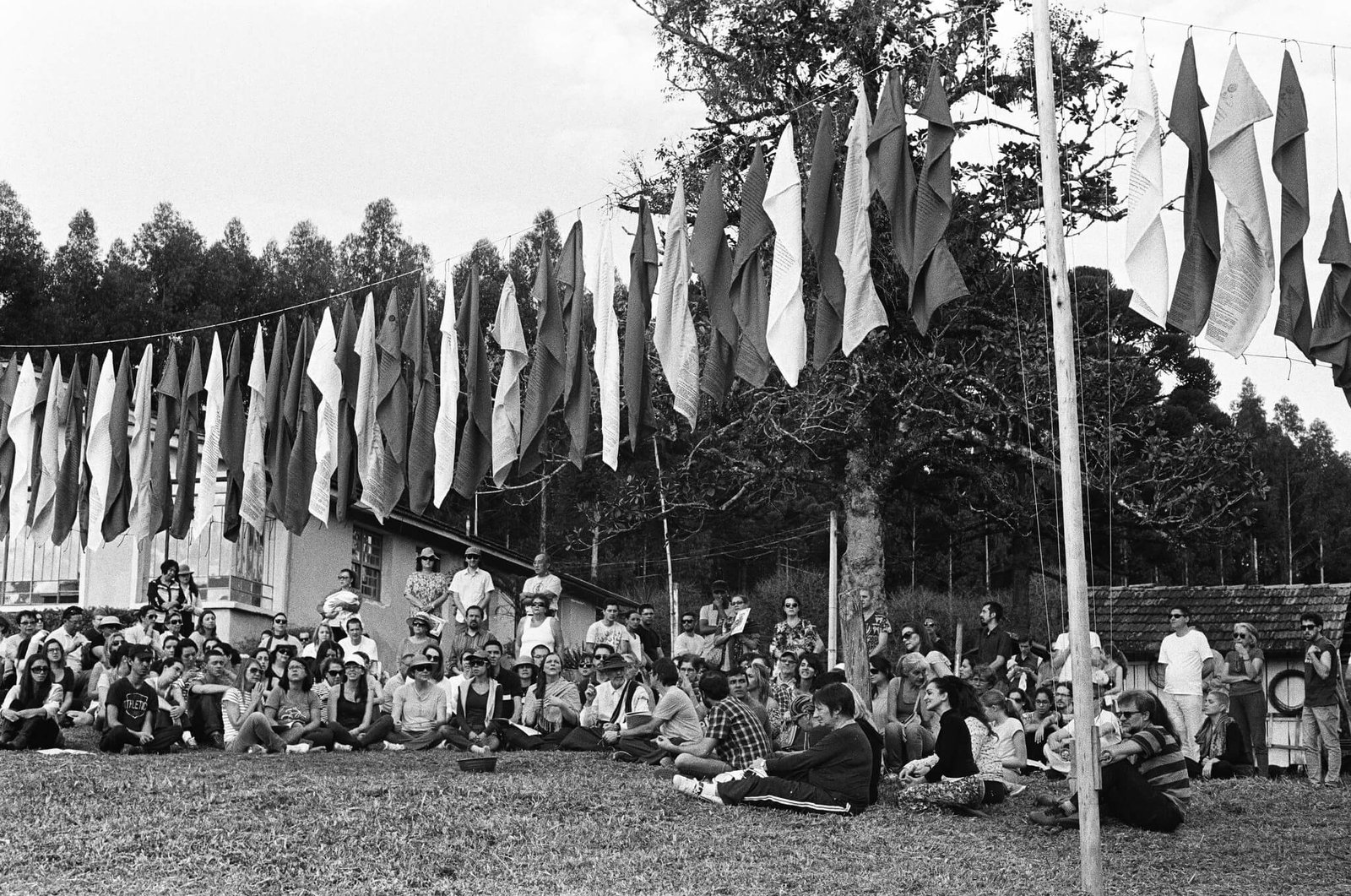

The Bodhisattva Center for Buddhist Studies (CEBB) was founded in 1986 in Porto Alegre by Lama Padma Samten, a disciple of Chagdud Tulku Rinpoche, a master of the Nyingma tradition of Tibetan Buddhism. CEBB is a Brazilian organization dedicated to the study and practice of Buddhism, offering a space for deepening Buddhist teachings.
CEBB's approach combines traditional Buddhist teachings with a modern perspective, making it accessible to a contemporary audience. It aims to offer a path for spiritual development and personal transformation based on Buddhist principles, emphasizing compassion, wisdom, and mindfulness.
How CEBB works:
Teachings and Practices
CEBB offers various teachings, practices, and meditation sessions based on Tibetan Buddhism. These include foundational teachings on mindfulness, compassion, and the nature of mind, as well as more advanced practices for experienced practitioners.
Centers and Groups
Community and Action
Accessibility and Inclusivity
Online resources
In today's digital age, CEBB also provides online resources, including teachings, meditation guides, and articles, making it easier for people to access Buddhist wisdom from anywhere.
Present in all regions of Brazil, run by the sangha through dialogue circles and sustained by the generosity of those who feel benefited, for 28 years we have seen a small room in the city of Porto Alegre multiply into around 10 rural communities and more than 35 urban centres. Check it out below:
CLIQUE E NAVEGUE PELAS REGIÕES:
Southern Rural Villages
The CEBB Caminho do Meio village is located in Viamão, Rio Grande do Sul, the southernmost state in Brazil. It was founded in 1997 as a result of the maturity of the sangha's activities in CEBB Porto Alegre.

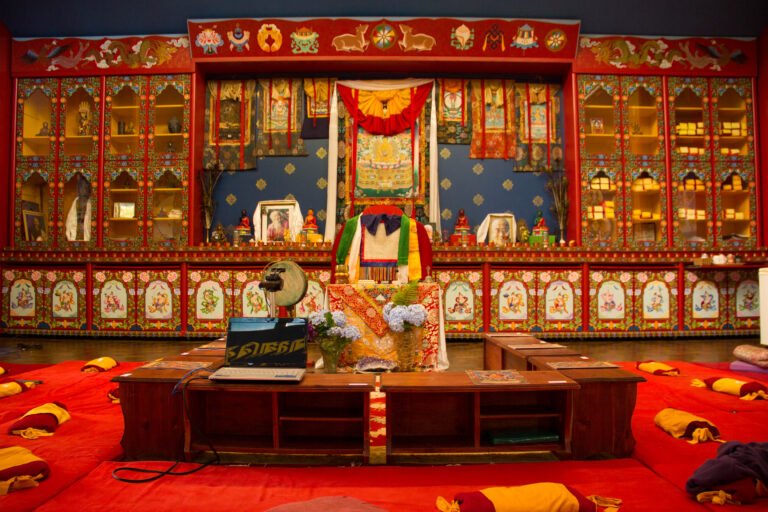
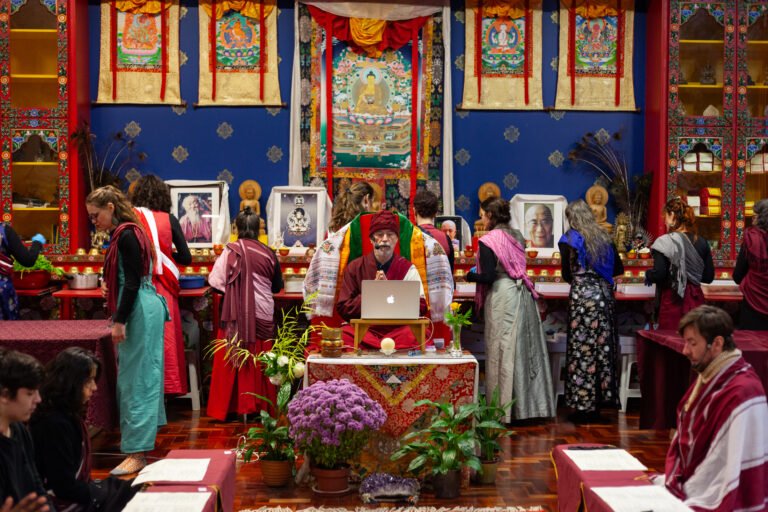

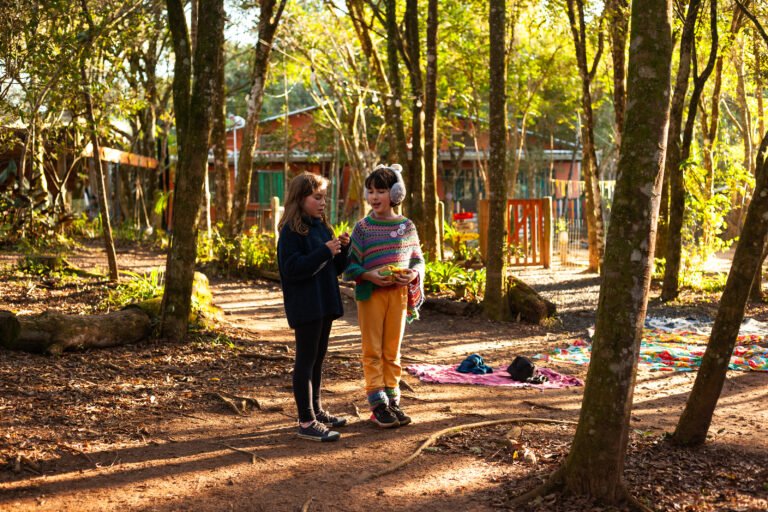


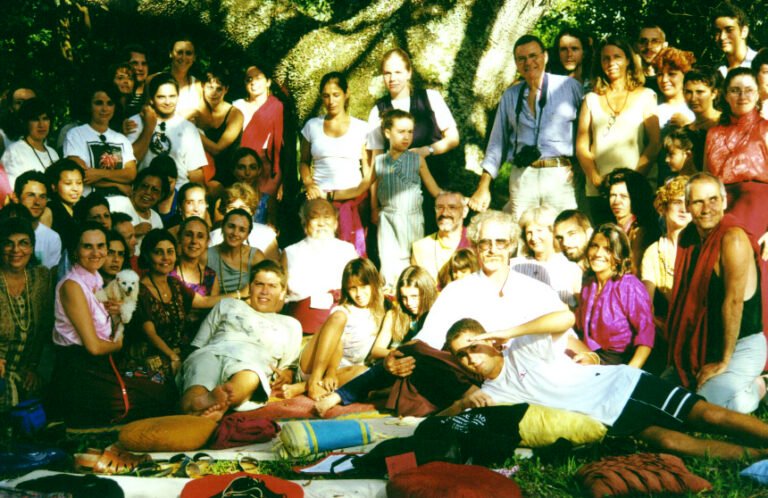





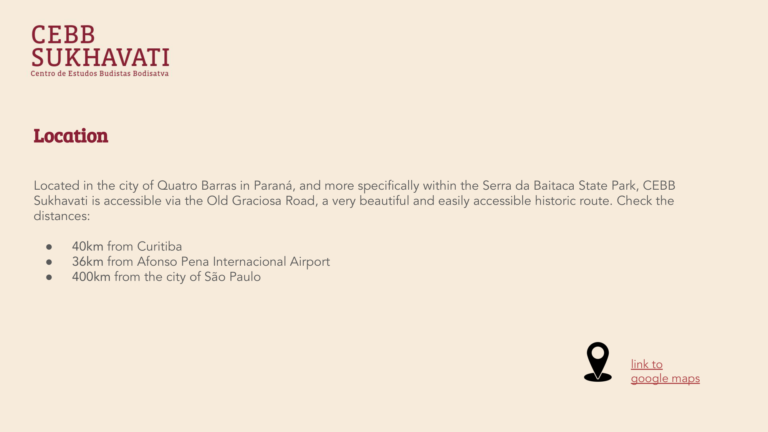
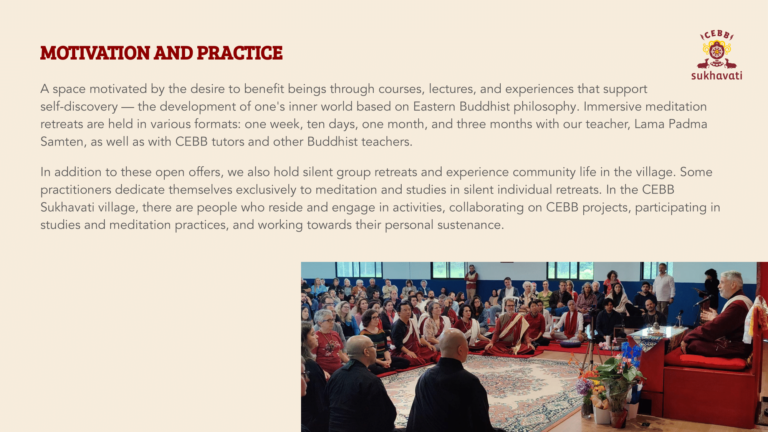
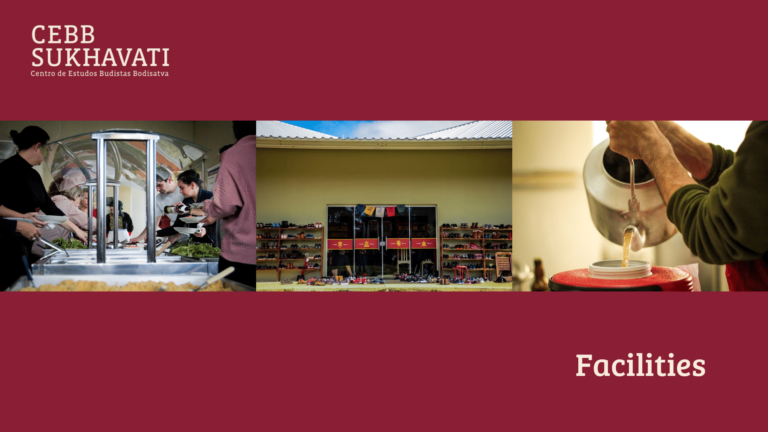
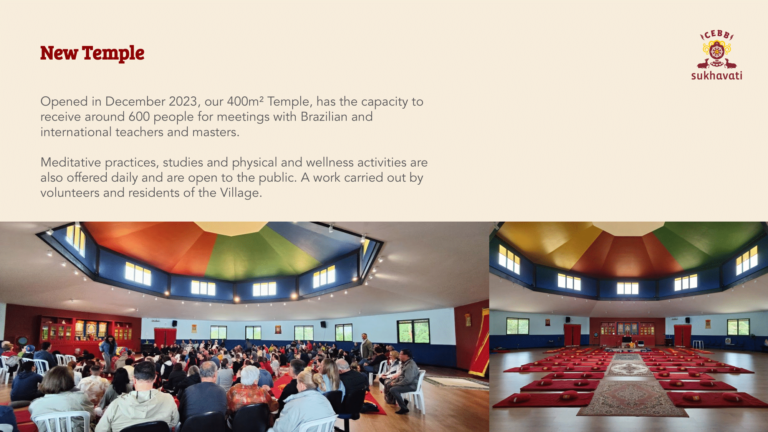
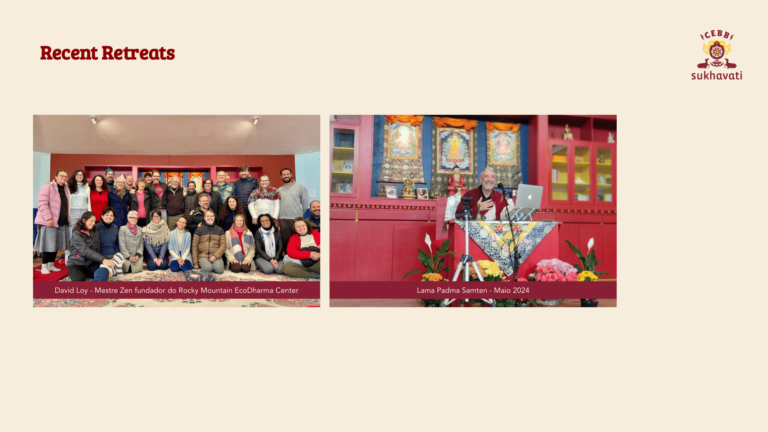
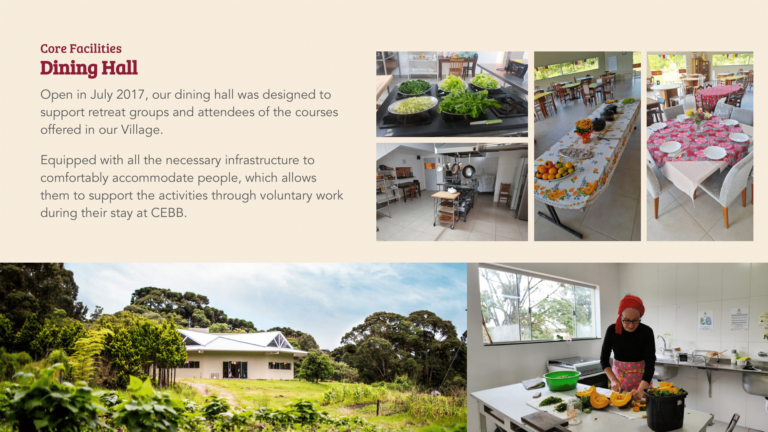
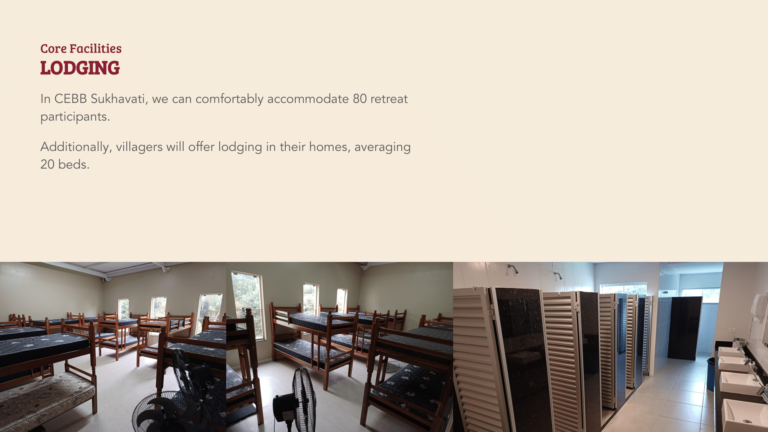
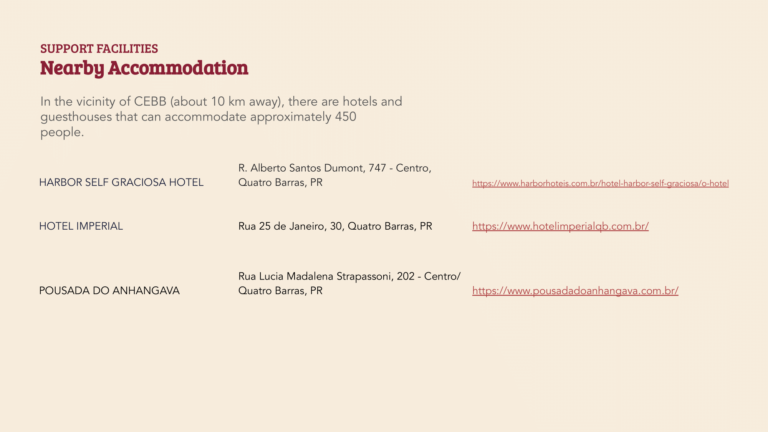
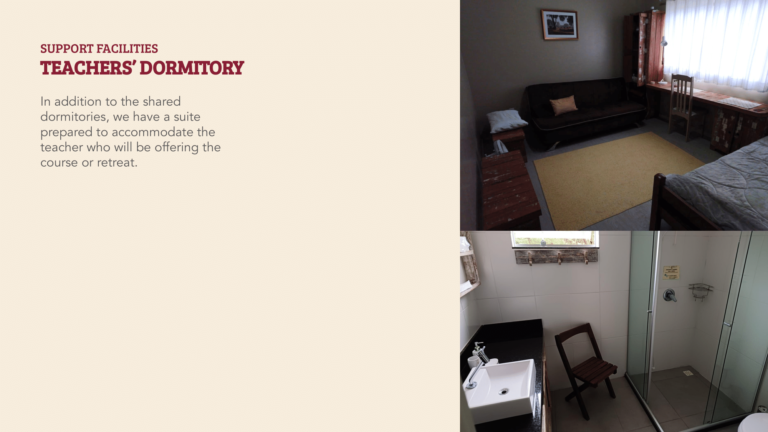

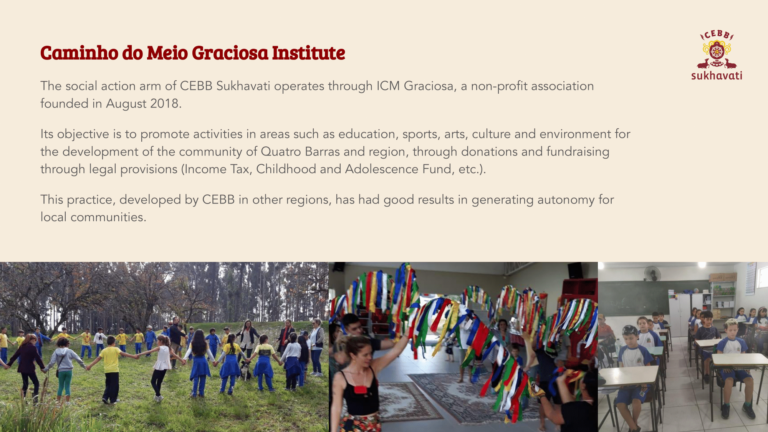

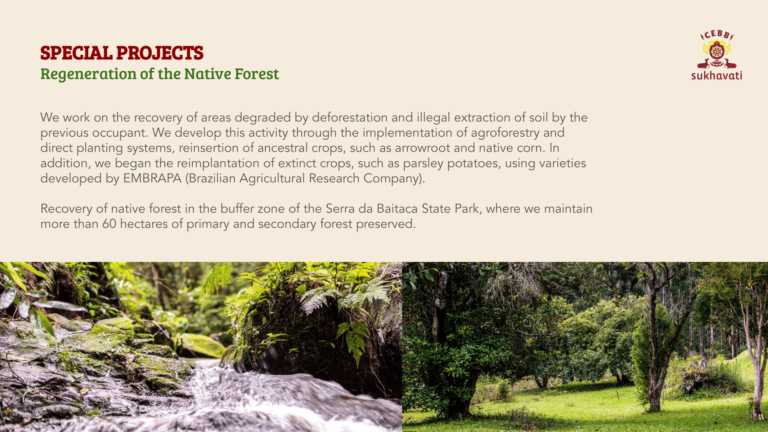
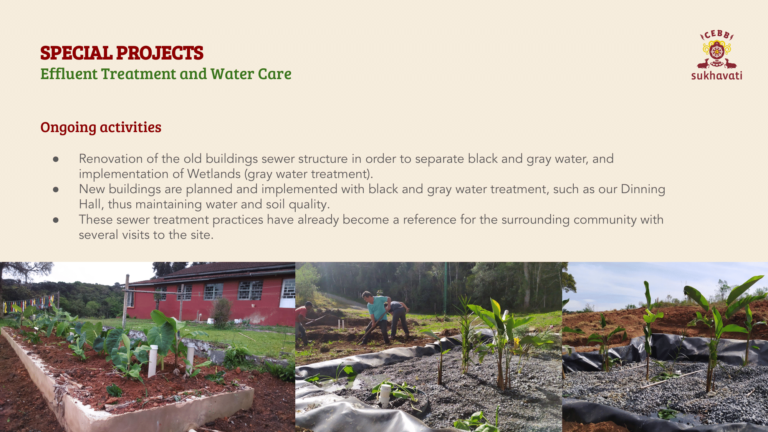
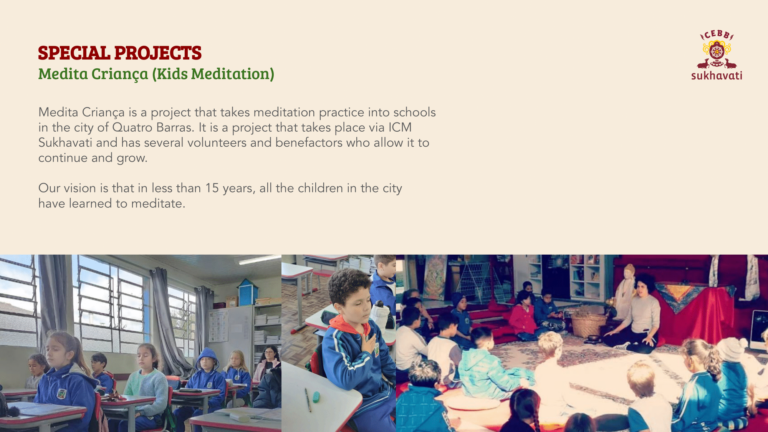
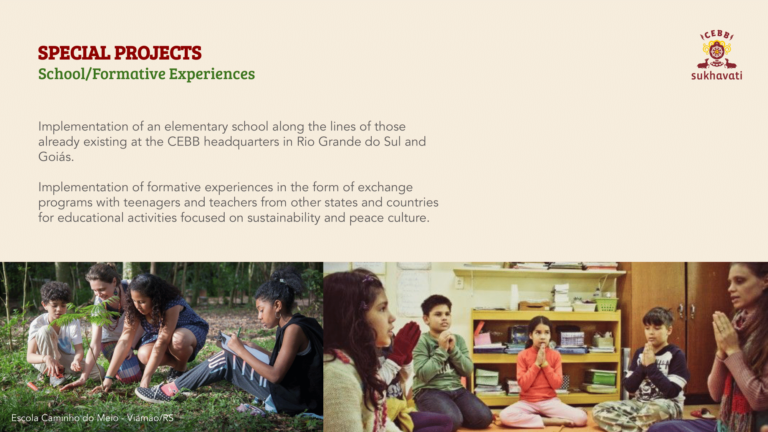
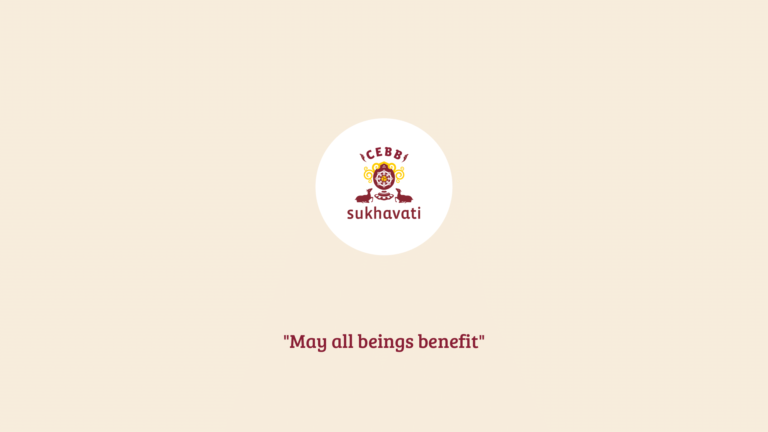

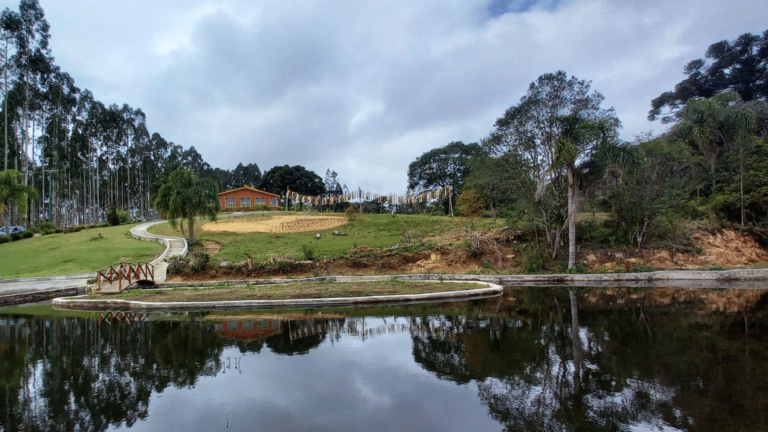
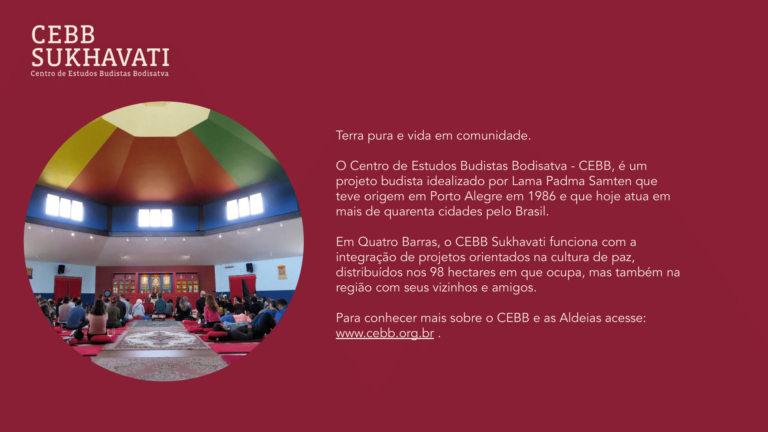


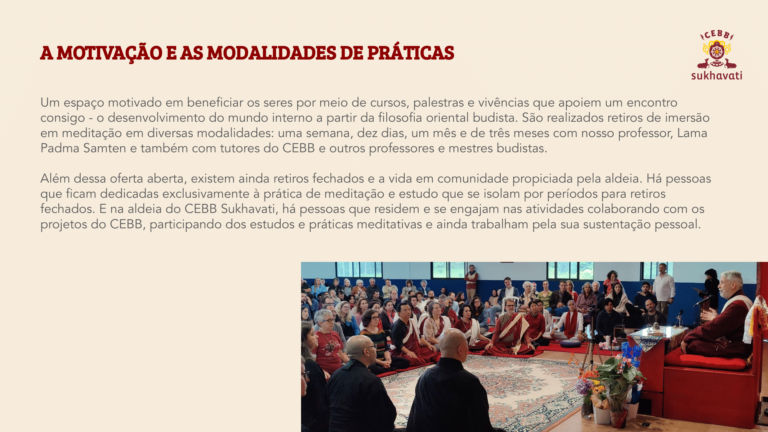
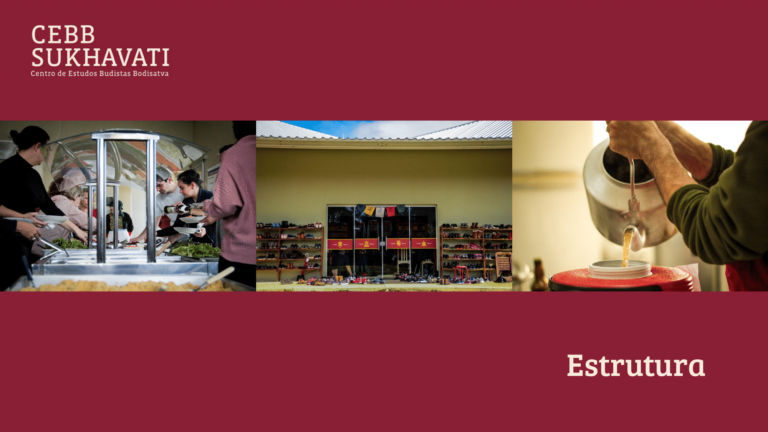

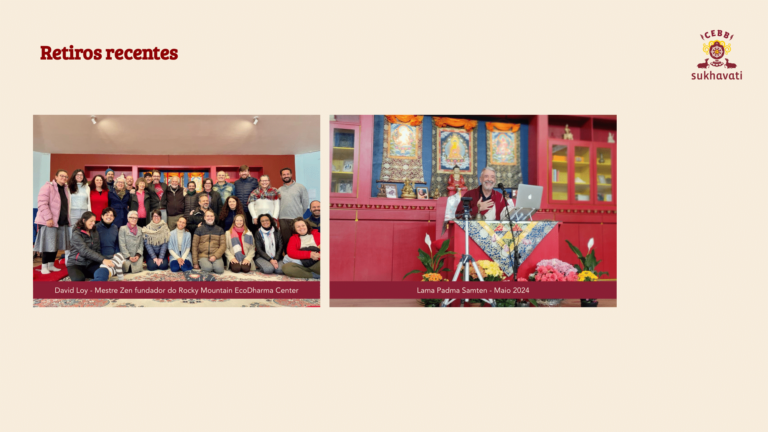
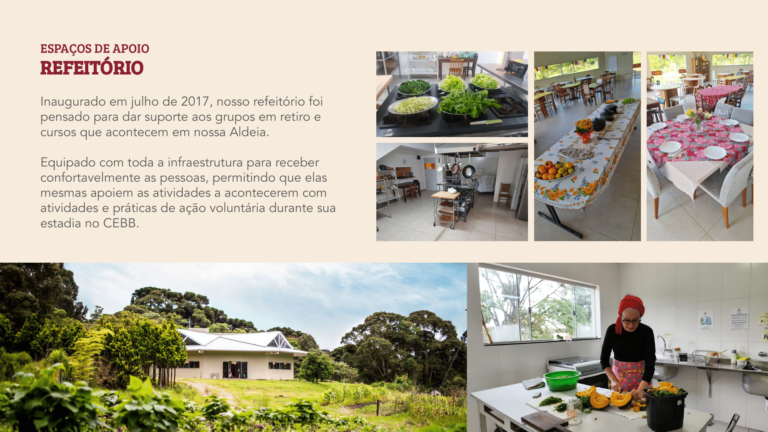
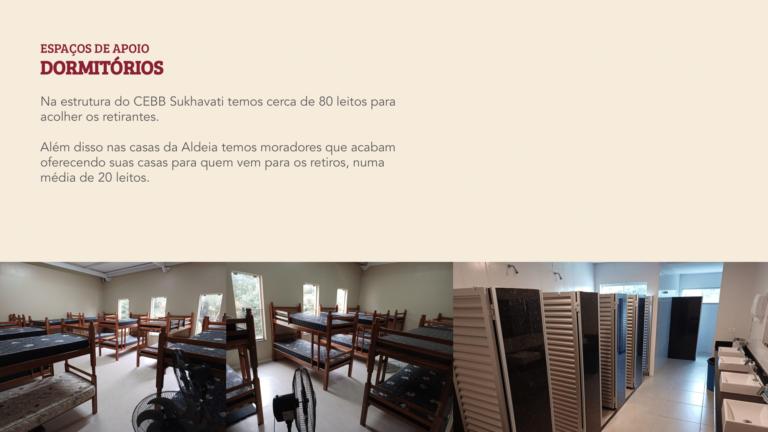
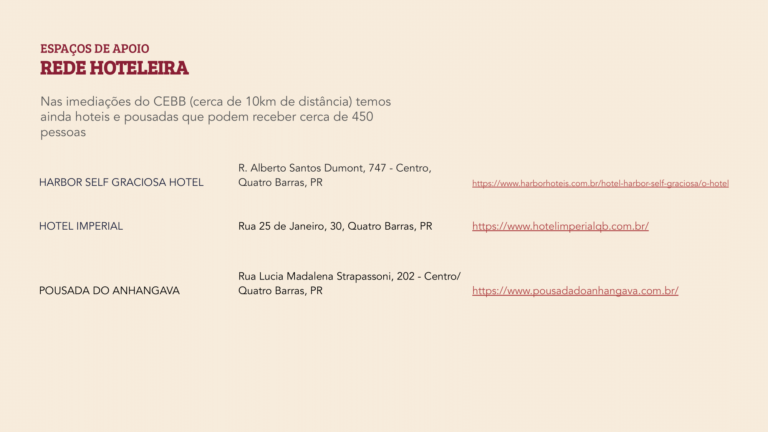

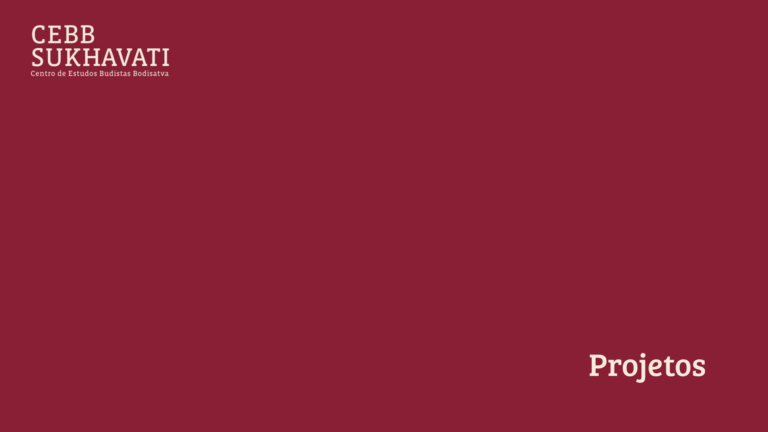
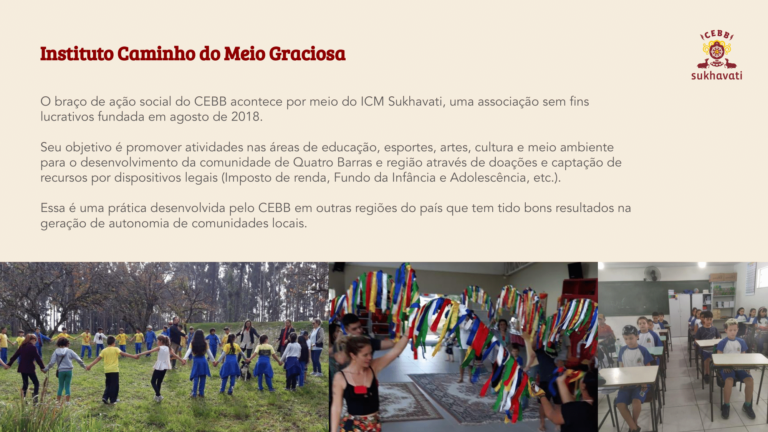
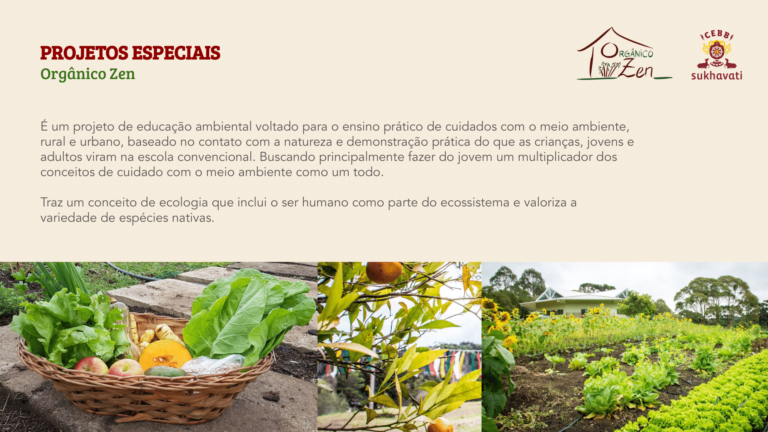
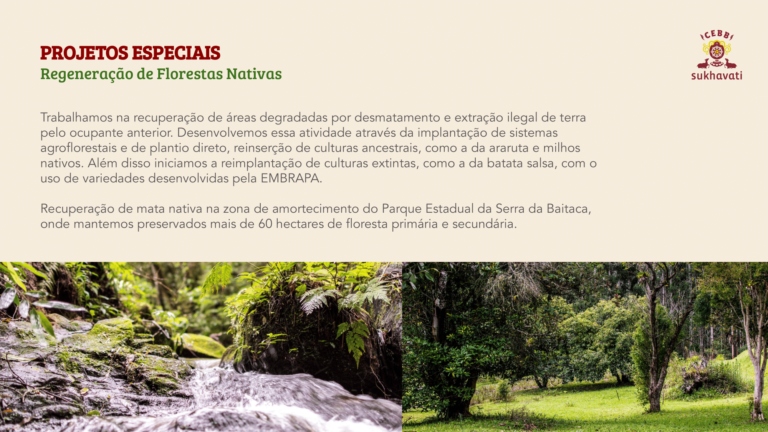
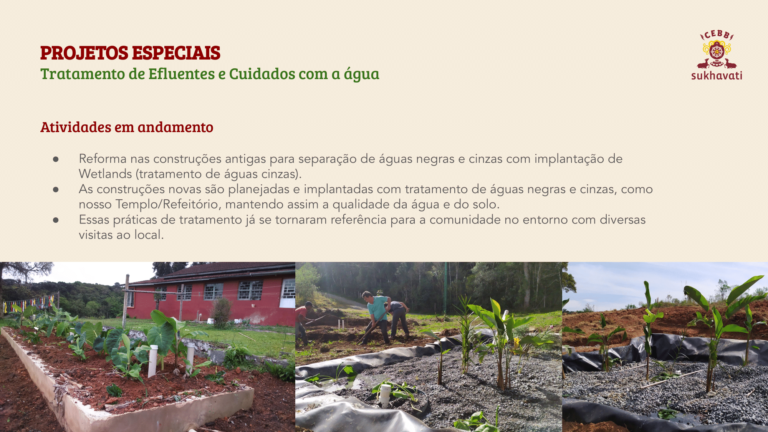
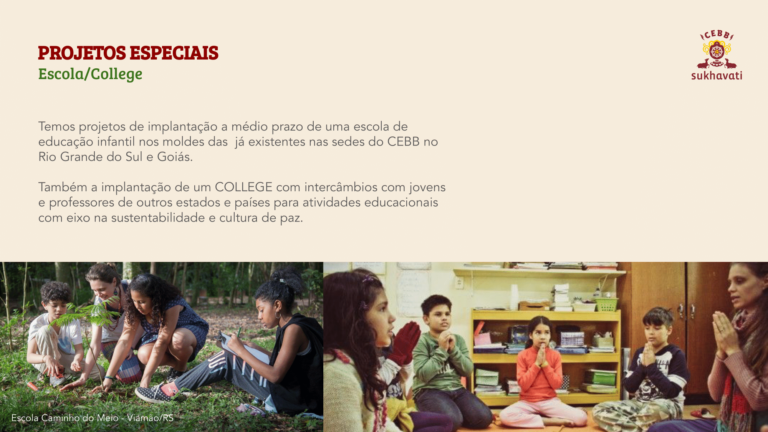

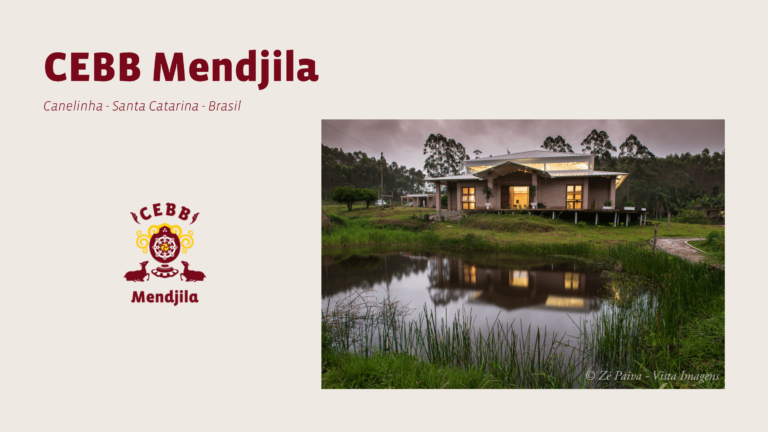
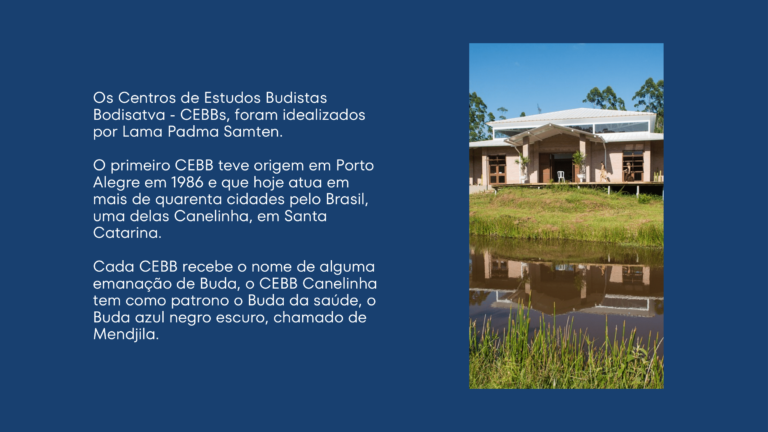
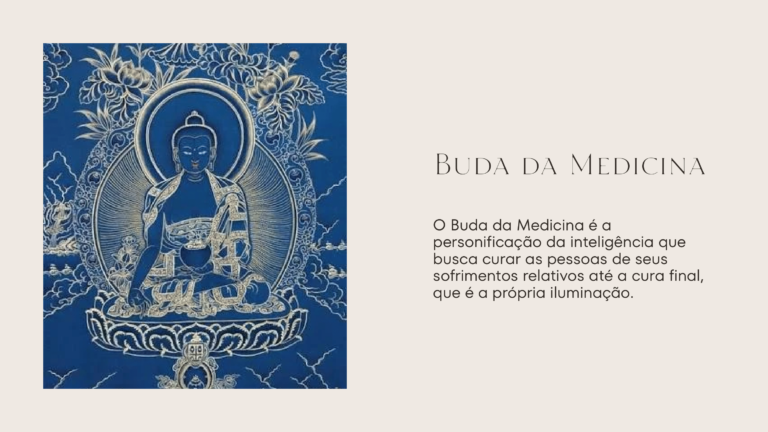
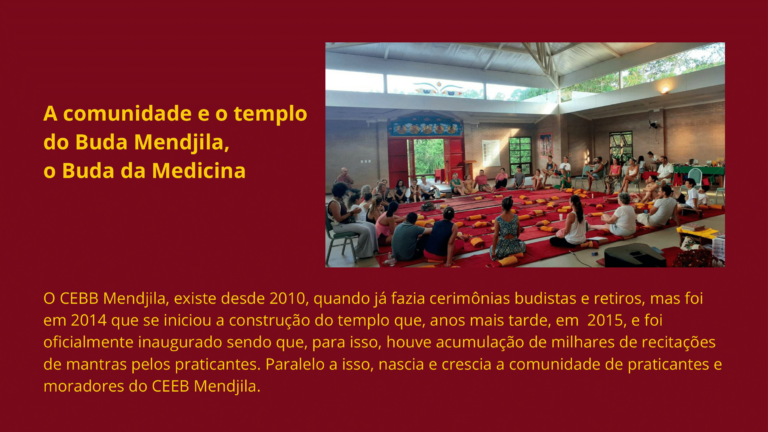
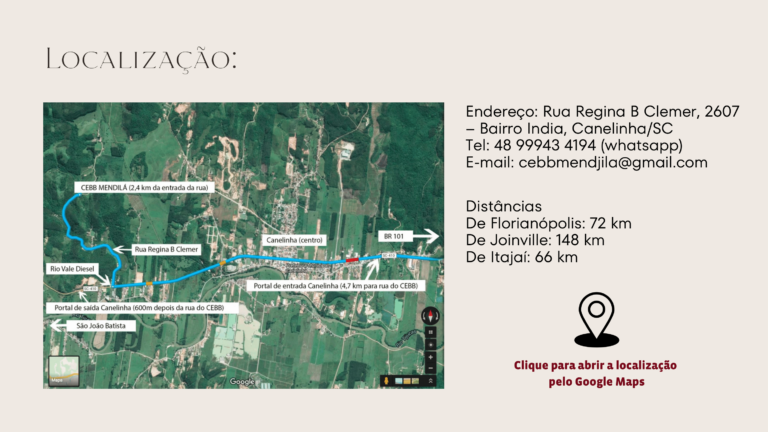
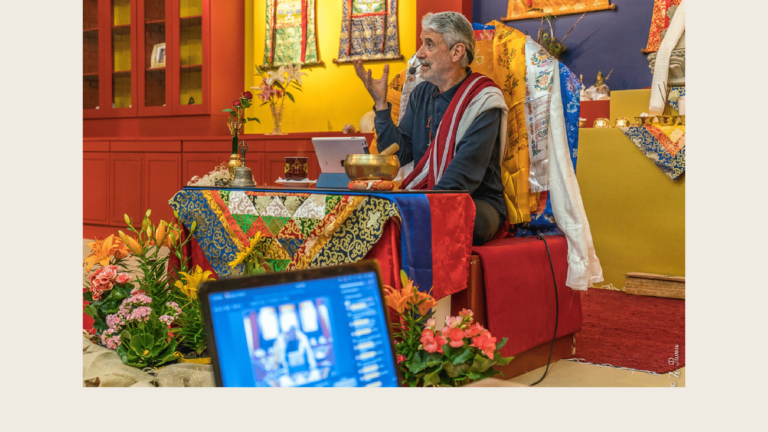
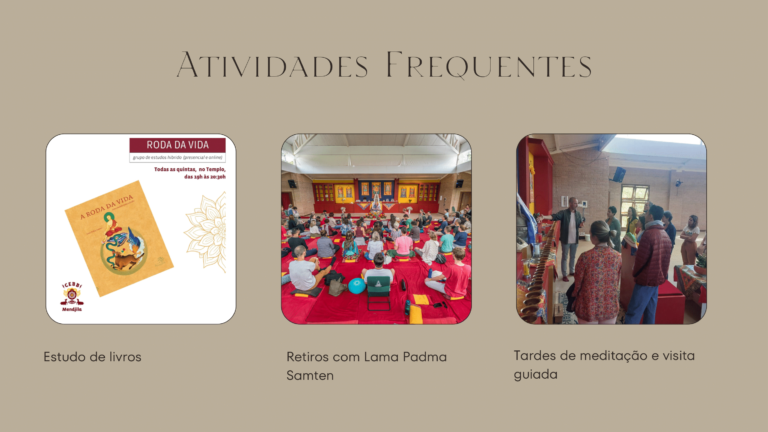
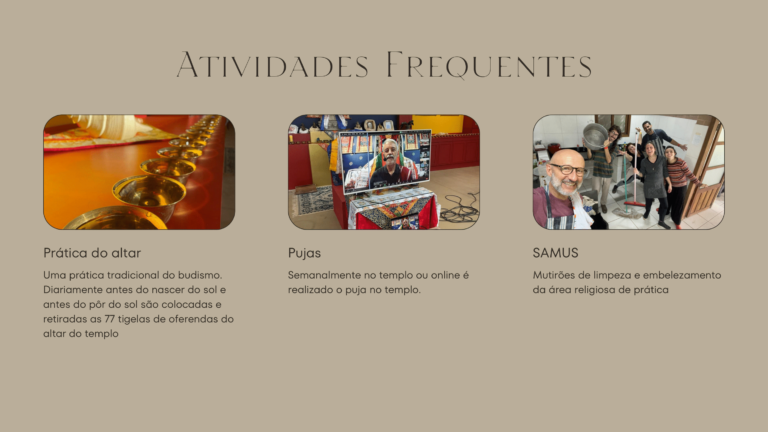
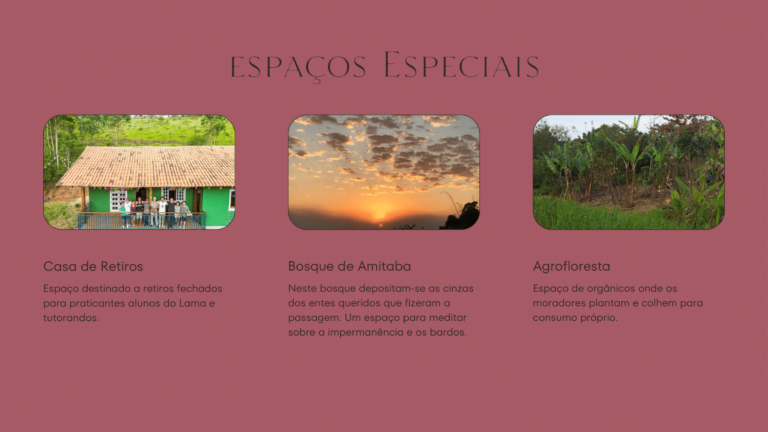

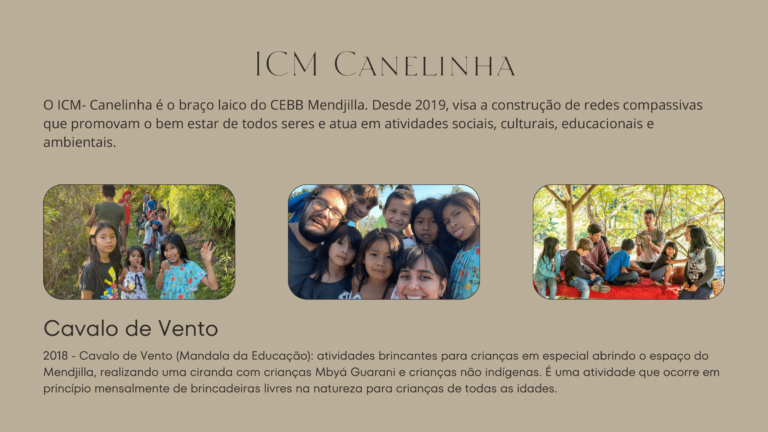
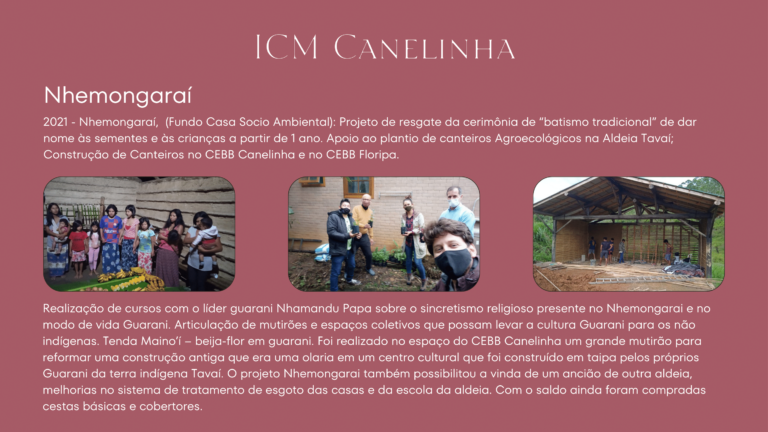
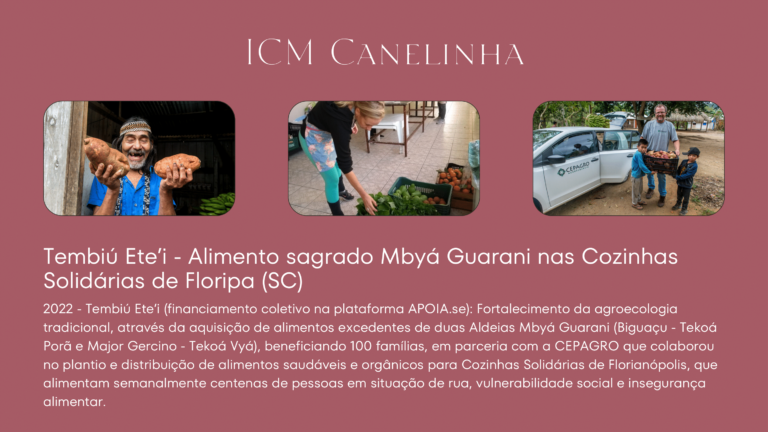





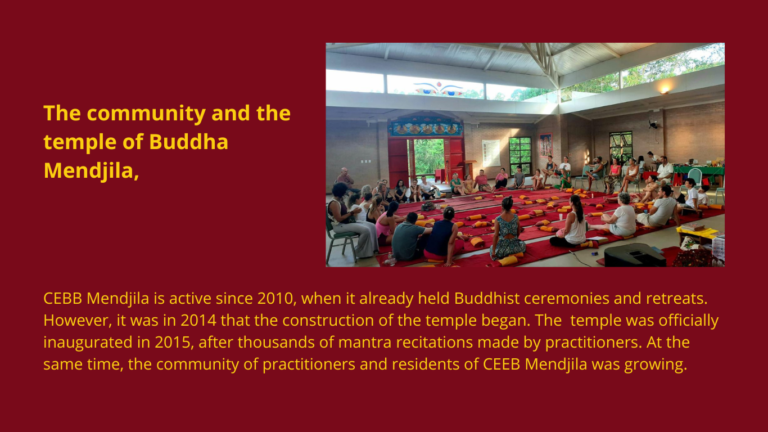









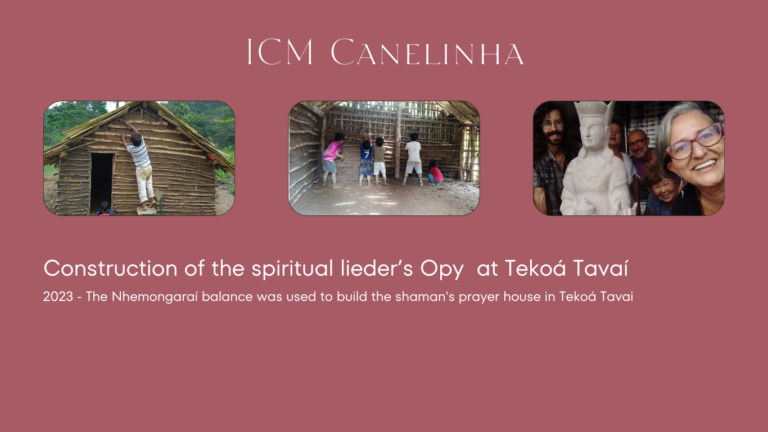

CEBB Akanishta's special vocation is to support the practice of people who seek to focus on deepening the Dharma through the different retreat modalities led by Lama Padma Samten.


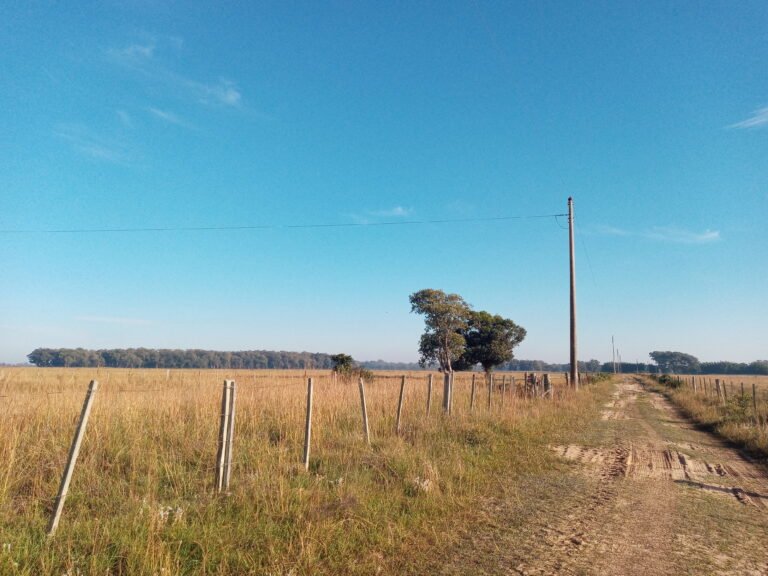

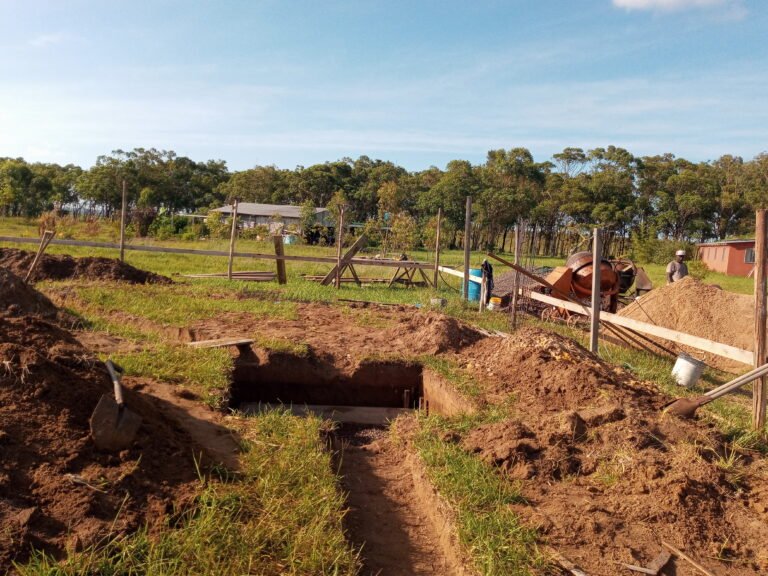
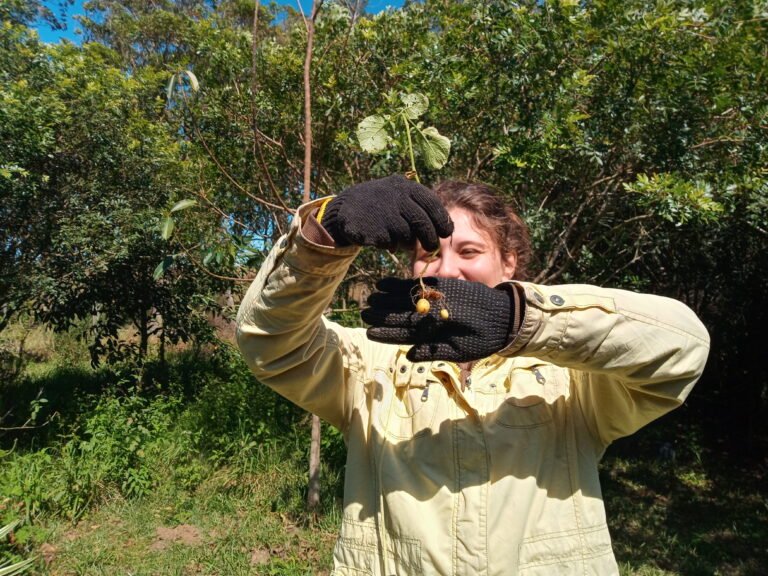
Temple
Com o crescente interesse da sanga em aprofundar a prática a aspiração por um templo com capacidade de acolher mais pessoas começou a tomar forma. Hoje em construção, o templo terá a capacidade de receber mais de 100 praticantes em retiro.
Retreats
Since 2019, Lama Padma Samten has been offering two annual retreats - summer and winter - aimed at deepening the practice of meditation. The silent meditation practices and pujas, which begin at 5:30 am and continue until 9:30 pm, are maintained uninterruptedly throughout the year by the practitioners who stay at Akanishta on long retreat. Food, caring for the facilities and the horticulture are managed by the practitioners themselves, as part of their practice, with the support of the center's resident tutor and coordinator.
Residents
In the center there is also a residential area that welcomes practitioners who share the same dream of building a pure land and deepening their practice. There are currently eight houses. Difficult to access and far from essential services, Akanishta has a different profile from CEBB villages, which are better able to accommodate families and those who need to travel around the cities.
CEBB Jetavana is an area dedicated entirely to long meditation retreats. It came about as a result of the maturing of the Sangha and the aspirations of Lama Padma Samten, and took shape in an exuberant area of preserved forest in one of the most beautiful places in Brazil: the Josafaz Canyon, located in the Serra Geral region, on the border between the states of Rio Grande do Sul and Santa Catarina.
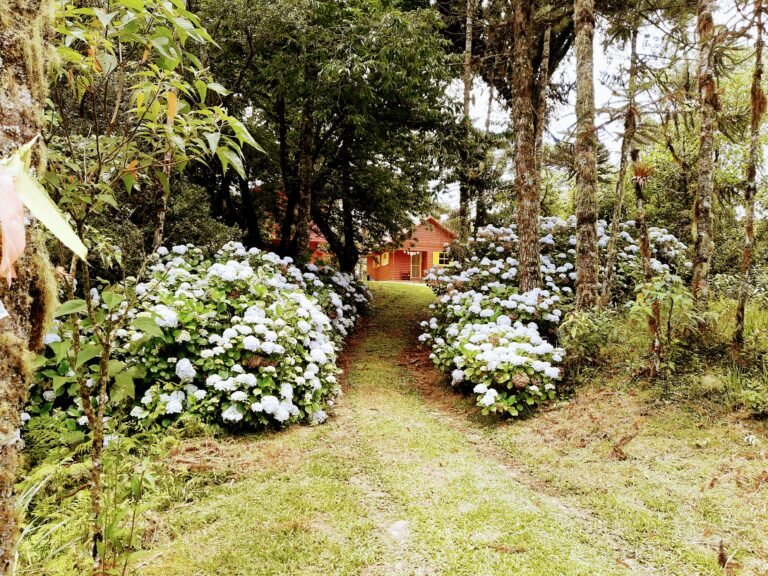

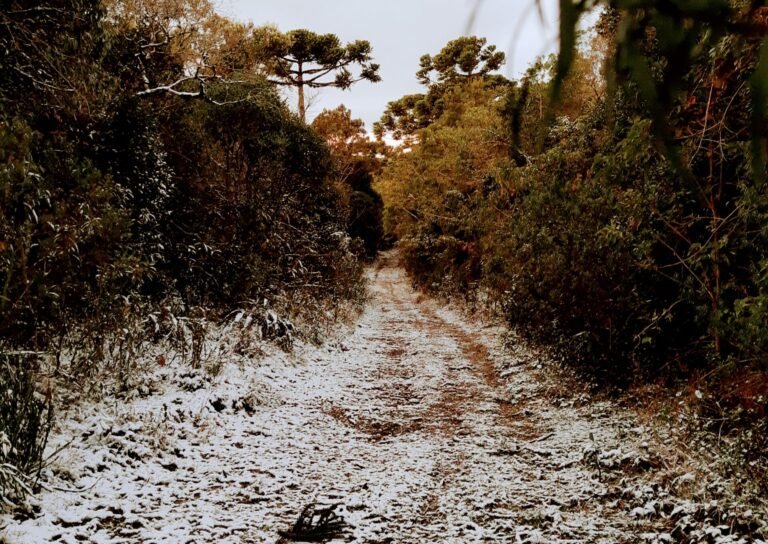
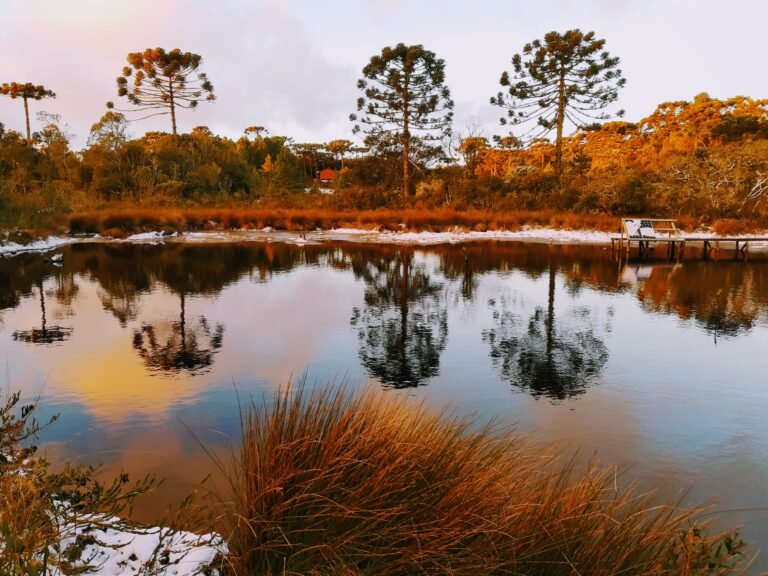
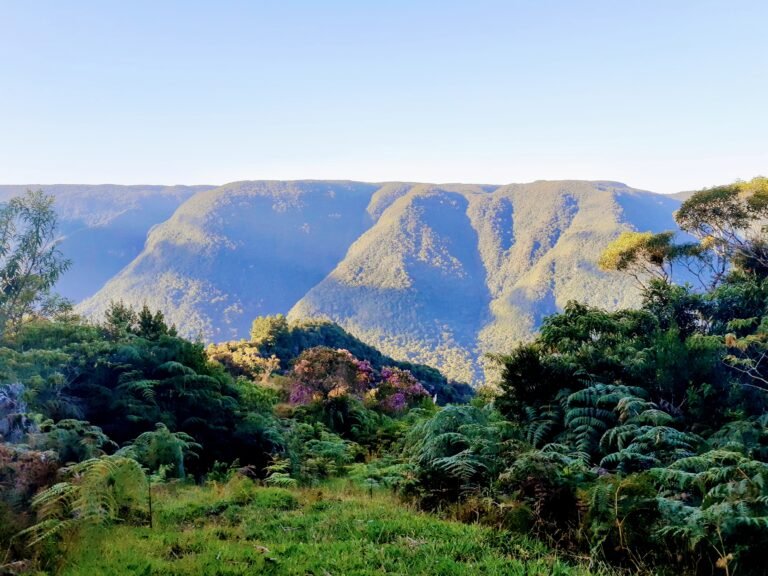
Imersa em uma área de 181 hectares de preservação ambiental, distante das cidades e do movimento urbano, the connection with the natural environment happens spontaneously, encouraging isolation and the practice of simplicity.
The physical structure of Cebb Jetavana includes a meditation room with a main altar and a support house equipped with a kitchen, bathrooms, laundry, pantry and individual rooms for solitary retreats.
Centros urbanos do SUL
Southeastern Rural Villages
The CEBB Dewachen village is located in Jarinu - São Paulo, the most industrialized state in Brazil. It originated in 2021, with the initiative and cooperation of the sangha of CEBBs from the interior and the capital, as a result of the maturing of their activities since the 1990s and early 2000s respectively.




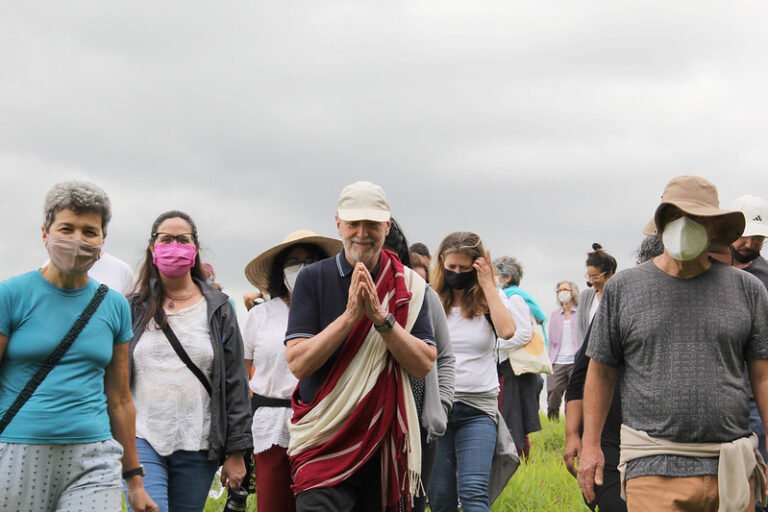
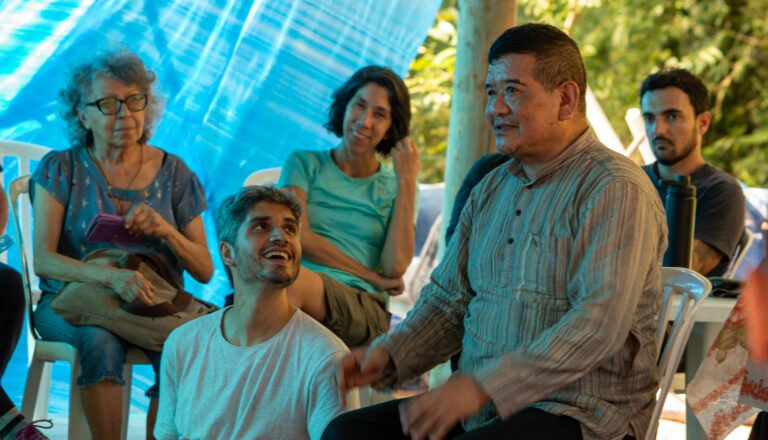

It is a fairly young village, located in an area known as the “Valley of Silence”, measuring 24.2 hectares, 17 hectares of which are preserved forest. Numerous species of birds, some non-human primates and deer have already been observed there.
At the moment, the village is in its structuring phase, with a resident-practitioner, a sheepdog and some chickens, as well as native species. It has a support house with a kitchen, a practice room, an artesian well, a power station, cable internet and mapping of the temple and support units for practitioners.
Currently, the activities of the CEBB Dewachen village are organized along the following general lines: Silent Meditation Practices, Participatory Management Talks and "Mutirões" (work groups).
The “Day of Silence in the village” is a Buddhist meditation practice, open to everyone, offered by the sangha under the guidance of Lama Padma Samten, which has been held on the third Saturday of every month since June 2023. The practice consists of getting together with people from different places and, through silent meditation, deepening contact with the inner world. On that day, we go for a walk in the woods, which we call a “forest bath”. More recently, we've started meditating in the forest itself.
Conversation circles are the participatory management method used in all CEBBs. People from the project take part in them and, after a practice of reading or silence, proposals, data, reports are presented, recommendations are made and decisions are taken, above all about infrastructure and how we organize ourselves among ourselves and in relation to our surroundings. Specific studies by the focal points, documents, budgets and contracting services are some of the recurring topics at the meetings.
Strategically scheduled on meeting days, they are ecological and social initiatives and help us to get to know each other better as agents of protection and innovation. Bio-construction work groups increase our familiarity with ancient techniques that have a low environmental impact, strengthen our bonds and sensory perceptions, and substantially improve our relationship with the land. Planting seedlings for reforestation, on the other hand, is related to the objective need to take care of the water in the spring and the stream.
In addition to these fronts, we have undertaken a formal educational initiative, with the pilot project “Meditating at School”. We participated with artistic presentations in a City Hall event to promote women's entrepreneurship, called FEMJA - Jarinu Women Entrepreneurs Market and we offer Yoga and Meditation classes for health center employees and state school students in the Yoga Week, in partnership with the Jarinu Department of Culture, in 2023.
In its short life, the village has already been visited by Roshi David Loy, in addition to our teacher Lama Padma Samten. Their presence encourages us and lights up our steps. We hope that our larger practice room, which is already under construction, will soon be ready for us to gather in Sangha to learn from our admirable teachers in retreat. To this end, we are going to expand the dining hall to welcome visitors during activity periods!
CEBB Abhirati is the result of a dream of more than 10 years by the sanghas of Rio de Janeiro and Minas Gerais, and is currently in its full construction phase.
In 2019, with the blessings of Lama Padma Samten, a 150-hectare farm was acquired, with eighty percent preserved vegetation and many springs.
In this area, a house has already been built with accommodation and a kitchen to support the sangha's activities; a large lunchroom that will serve as a temporary room for retreats, courses and practices; a large industrial kitchen to cater for events; and accommodation for up to 100 people (under construction). It is also part of the dream to build a temple for up to 300 people, a house for closed retreats and other projects, such as a crafts house, a school, a health center, etc.
The main focus of the Abhirati Village dream is Buddhist studies and retreats for teaching and meditation. There will also be a space for closed retreats for those who wish to deepen their practices for longer periods in isolation.
The group of residents in the Village are building their homes with designs that preserve nature, as indicated by the entire CEBB. The residents' area has 75 shelters, with several houses already completed and others under construction, and in a second stage around 30 additional shelters to receive more people from the sangha.
All the actions and practices are under the guidance of Lama Padma Samten
Centros urbanos do SUDESTE
Rural Villages in the Midwest
Created in 2012 by the sangha, together with Lama Padma Samten, the CEBB Alto Paraíso village was designed to be a place of residence that enables simple living and an environment conducive to the study and practice of Buddhist teachings. It is located in an area of 44 hectares next to the Chapada dos Veadeiros National Park, one of the most beautiful and important ecosystems in Brazil.
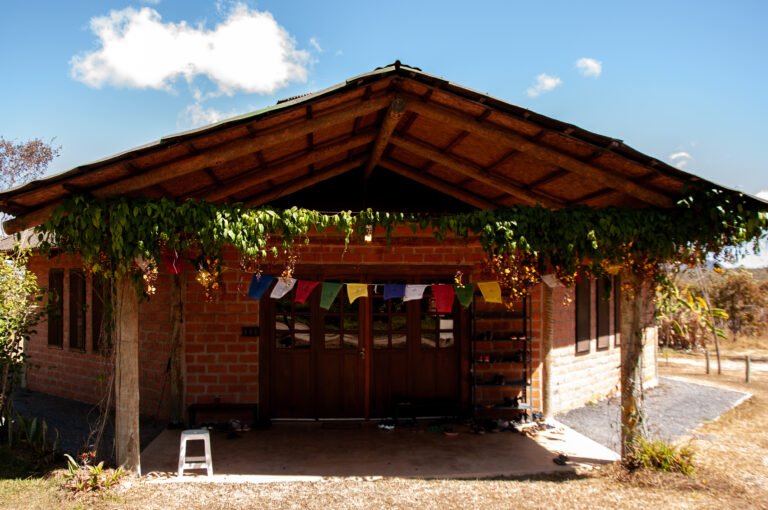
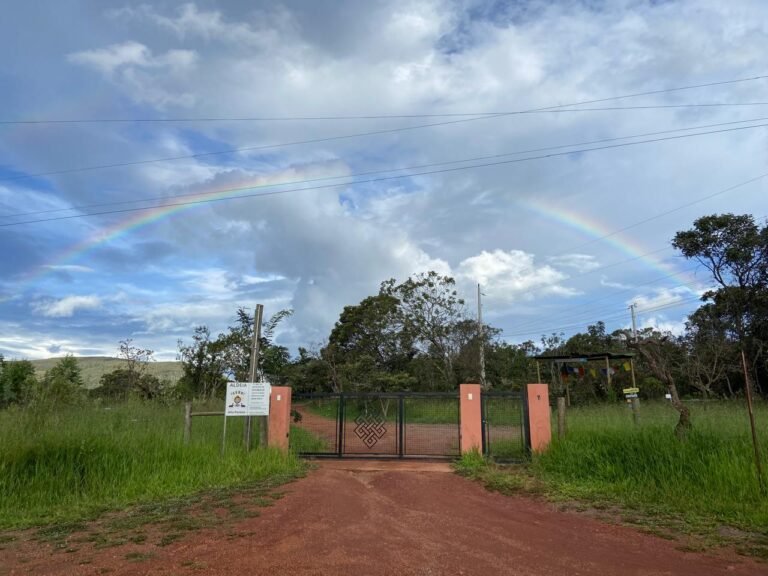


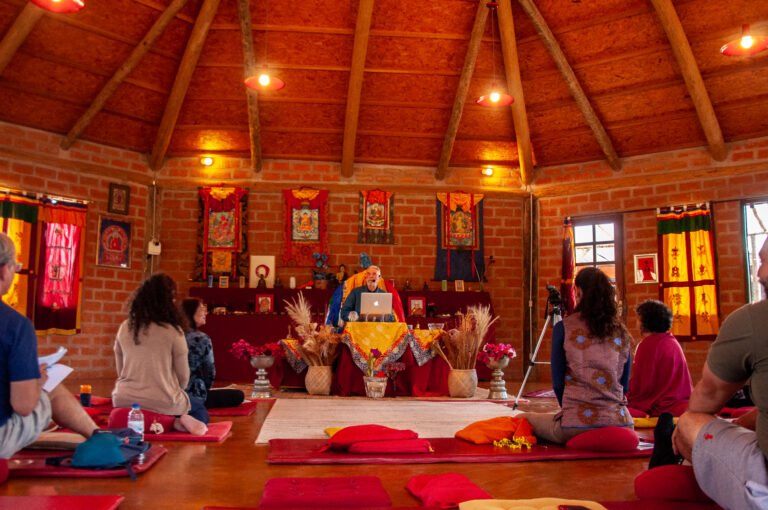
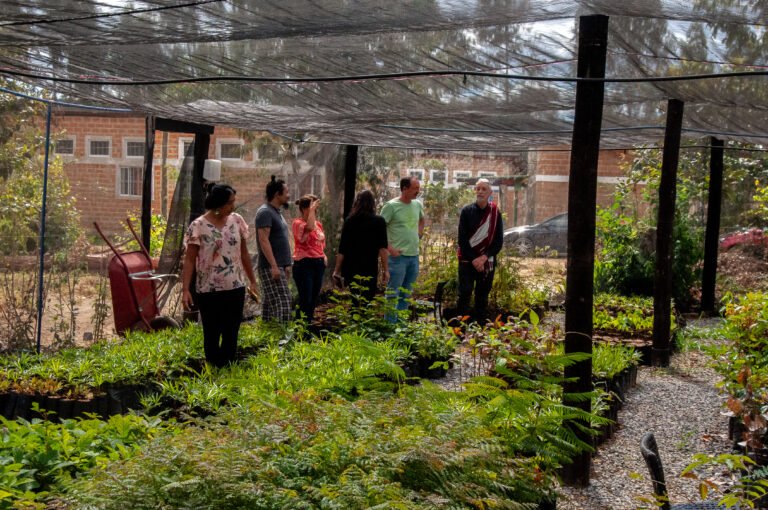
The village currently has 50 lands, of which 29 already have houses built, housing around 30 people. The village's infrastructure is divided into two main areas: the temple area, which includes the temple itself, two retreat houses and a support house; and the residents' area, where the houses and the entire structure of the former Vila Verde School, some agroforestry spaces and the Viveiro Escola nursery are located.
Studies and meditation practices are offered weekly at the temple. Twice a year, the village is delighted to welcome Lama Padma Samten, who leads a 10-day retreat. In addition to the retreat with the Lama, there are also short retreats led by CEBB tutors.
The retreat houses located in the temple area welcome practitioners who wish to spend longer periods of time dedicated to deepening their meditation practices following the Lama's teachings.
In addition to activities linked to the practice and study of Buddhism, CEBB Alto Paraíso is also home to the Instituto Caminho do Meio Alto Paraíso (ICMAP), which aims to bring benefits to the city and region. Among ICMAP's main actions are:
CEPEAS is a center dedicated to the research and practice of syntropic agriculture, an agricultural method that seeks to mimic natural processes in order to create sustainable and productive agricultural systems. CEPEAS offers periodic courses in syntropic agriculture and maintains some areas of agroforestry within the village, serving as a living model of regenerative agricultural practices.
The Semente Amarela (Yellow Seed) project was set up to create a network for young people, children and babies who are in a fragile situation at a time when their family is changing. It provides support and attention aimed at teenage pregnancy and seeks to provide information and raise awareness on issues related to family planning, healthy and conscious pregnancy, care for the baby and child during early childhood and, above all, the bond between young people and this new life that is on the way.
Through hikes in the middle of the vegetation, baths in the waters of the Cerrado, among other experiences, it provides children and young people from Alto Paraíso and the region with critical observation of nature, as well as reflections on the relationship with our inner world and the biosphere around us. Since 2016, more than 1,000 children from the municipality's public and private schools have been brought closer to nature through visits to the Chapada dos Veadeiros National Park.
Installed within the village area, the Viveiro Escola has the capacity to house 20,000 seedlings. The nursery produces native species that are used to recover degraded areas of the cerrado. In addition, it offers environmental education for children and adults, teaching them about the importance of conservation and sustainable management of natural resources.
Centros urbanos do CENTRO-OESTE
Northeastern Rural Villages
CEBB Darmata came about as a result of Lama Padma Samten's aspiration to establish a Dharma center focused on the practice of short and long retreats. The first rural CEBB founded outside Rio Grande do Sul, the Darmata is also an opportunity for practitioners from the north and northeast of Brazil to practice the Dharma and have the chance to participate in the structuring of a work and living place based on the practice of Buddhist teachings.
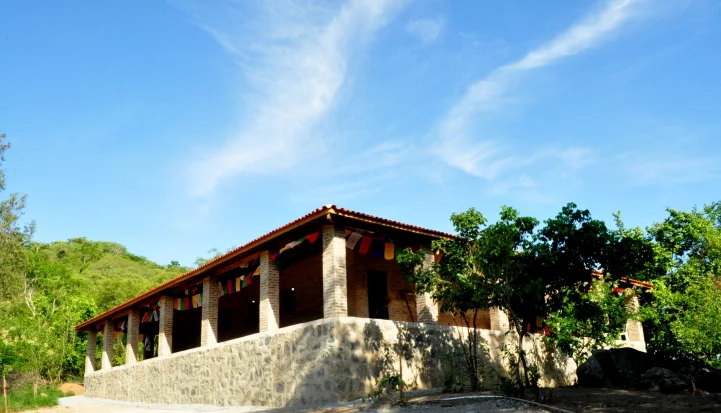
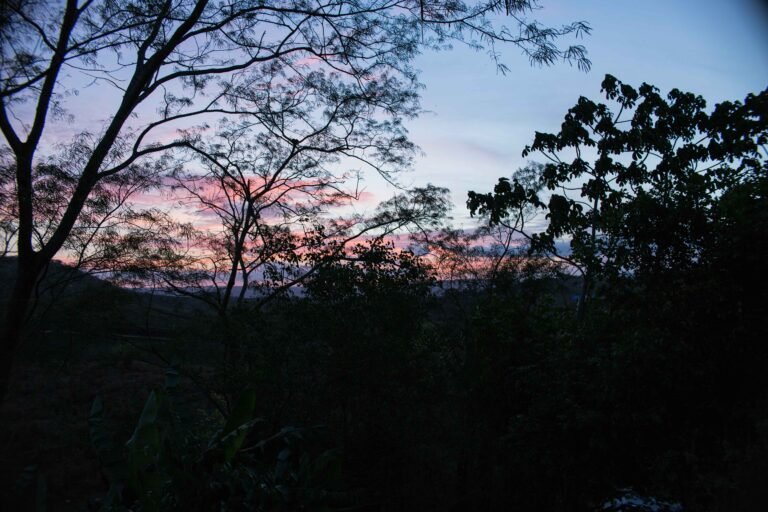
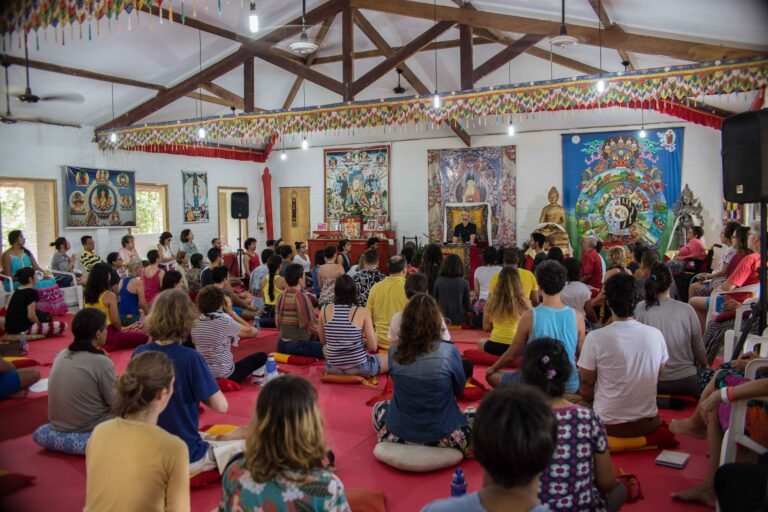
Founded in 2009 during a retreat on Prajnaparamita led by the Lama, CEBB Darmata has held various retreats and courses since then. In 2010, CEBB acquired 15 hectares and began building a temple for 120 people, which was completed in 2011, the same year that H.H. Sakya Trizin granted Guru Rinpoche's initiation in the newly inaugurated temple.
Darmata is located in the northern "Zona da Mata" of the state of Pernambuco, a region historically marked by sugar cane cultivation and therefore with strong traces of environmental degradation. Cattle pastures and extensive sugar cane plantations surround the CEBB area: 15 hectares of forest that has been protected to the same extent that it protects practitioners for the practice of silence and study.
During the course of its work, the NGO Ação Darmata, founded by students of Lama Samten, has promoted dialog with the local community in order to think about and promote the sustainable development of the region from a perspective of happiness and lucidity. Collective actions, such as planting more than 600 saplings together with the local community, marked this dialog. The NGO was discontinued, but its legacy still has an impact on the relationship with the local community.
Since the beginning of its activities, Darmata has sought to support the community of Timbaúba city. Strengthening family farming has been a theme of CEBB Darmata's dialog with farmers in the region.
Since 2016, Darmata, under the guidance of the tutor João Petry and with the support of OSSAM (Saint Mary Social Work), has been holding weekly meditation and relaxation meetings in Timbaúba. These activities provide the local community with an environment of welcome and well-being, promoting inner peace, mental health and the strengthening of community ties.
At Darmata, we have sought to strengthen and apply agroecological practices in our area, promoting harmonious integration between human beings and nature. With the support of resident Matheus Felipe, and his approach to Serta (Alternative Technology Service), we offer biannual workshops that include sustainable soil management techniques, agroecological cultivation, biodiversity preservation and regenerative practices. These meetings have been essential for raising ecological awareness and developing a more balanced and sustainable agriculture.
Over the years, Darmata has improved its structure to welcome practitioners on different retreat modalities, both short and long, offering all the necessary support for the practice of deep silence. With a welcoming and well-equipped environment, it guarantees the care and creation of appropriate spaces for meditation. Our structure seeks to provide comfort and tranquillity, allowing full immersion in introspection and contemplative practice.
The Darmata continues to support the Lama's aspirations and provide a space of refuge and welcome for practitioners seeking to deepen their contemplation of Buddhist teachings and the practice of meditation.
Our aspiration is to continue cultivating an environment where the wisdom of the Dharma can flourish, offering integral support so that each person can connect deeply with silence. Through our activities, we seek to generate lasting benefits that resonate within and beyond our community, contributing to everyone's well-being.
Located in the northeast of Brazil, CEBB Recôncavo is situated in the state of Bahia, a region of great historical and cultural importance, where the first Europeans arrived in the territory we know today as Brazil. Currently, the Dharma in Bahia, under the guidance of Lama Padma Samten, is practiced in two Buddhist spaces: a practice room in the capital, Salvador, and the rural CEBB Recôncavo center, in the city of Santo Amaro da Purificação, in the Recôncavo Baiano.
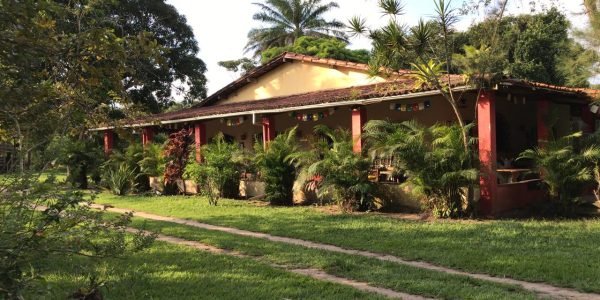
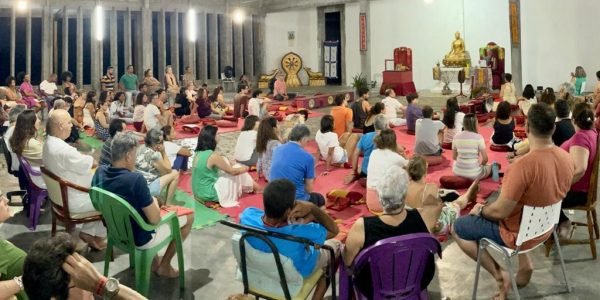
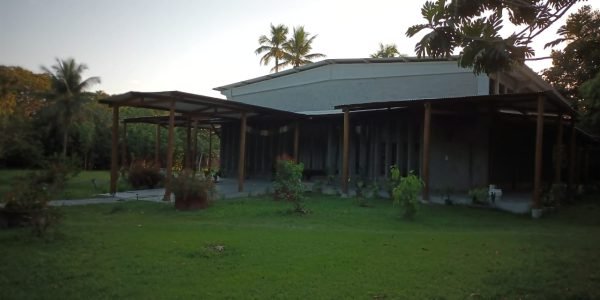
Santo Amaro is a historic city known for being the birthplace of samba and world-renowned artists Caetano Veloso and Maria Bethânia. It is also home to a Buddhist Temple that can accommodate around 500 people. This region is predominantly inhabited by people of African descent, including quilombola communities, and holds deep memories of the history of slavery in Brazil. This historical connection offers a unique opportunity to reflect on and work towards overcoming the causes and conditions of human suffering, anywhere in the world and at any time in history. In addition, the region is rich in vibrant culture and cuisine.
In this place of preserved and welcoming nature, founded on July 13, 2013, we have welcomed more than 13,000 people and several masters. There is a rich fauna with wild animals and magnificent flora with tropical flowers and exuberant centenary trees producing fruit such as jackfruit, mango, banana, avocado, jenipapo, lemon, cocoa and countless others as well as medicinal plants. There is a preservation area bordering a stream with many waterholes. It has grown. It has become noticeable, welcoming so many people.
With its 7.5 hectares, it is the second Cebb Village established in the northeast of Brazil. It currently has 20 houses built, known as individual lodgings or “shelters”. It also has 6 collective lodgings. It currently has the capacity to accommodate around 85 people, enjoying a nutritious and tasty ovolactovegetarian diet.
The infrastructure consists of the Temple, the Meditation House, the Study and Practice Room, and other facilities. It includes a kitchen and a cafeteria that are open during the meetings, as well as a good capacity for welcoming visitors during activity periods.
The CEBB Recôncavo village is dedicated to spiritual growth and Buddhist practice, offering a serene environment and ample resources for both the local community and visitors. Some of the activities and resources available include:
When we contemplate the CEBB Recôncavo Temple, the word that comes to mind is gratitude. We are witnessing the realization of a great dream, day after day, blessed by Lama Padma Samten, and we hope that many, many beings will benefit from this space. CEBB Recôncavo is an inspiring place that reconnects us with our inner temple, with our hearts. Entering this temple is something that touches us, a moving experience that awakens enchantment and tears of emotion. It's a place where the sangha strengthens itself and renews its vows, remaining steadfast in its practice!
Centros urbanos do NORDESTE
Northern Urban Centers